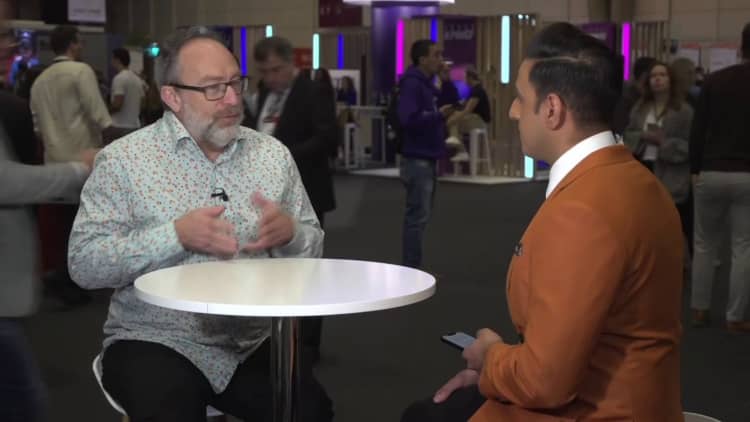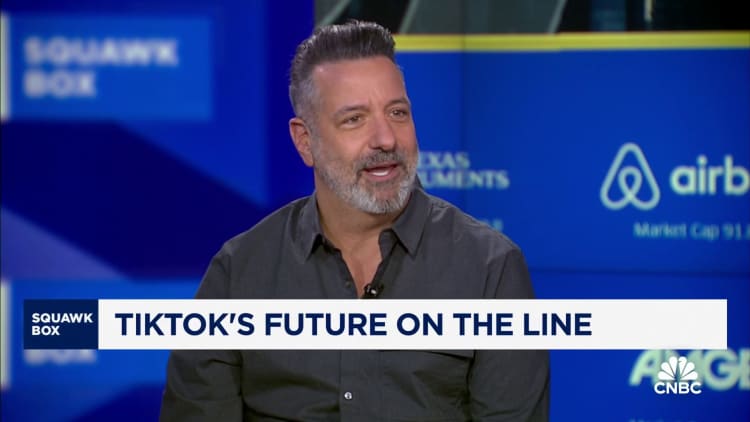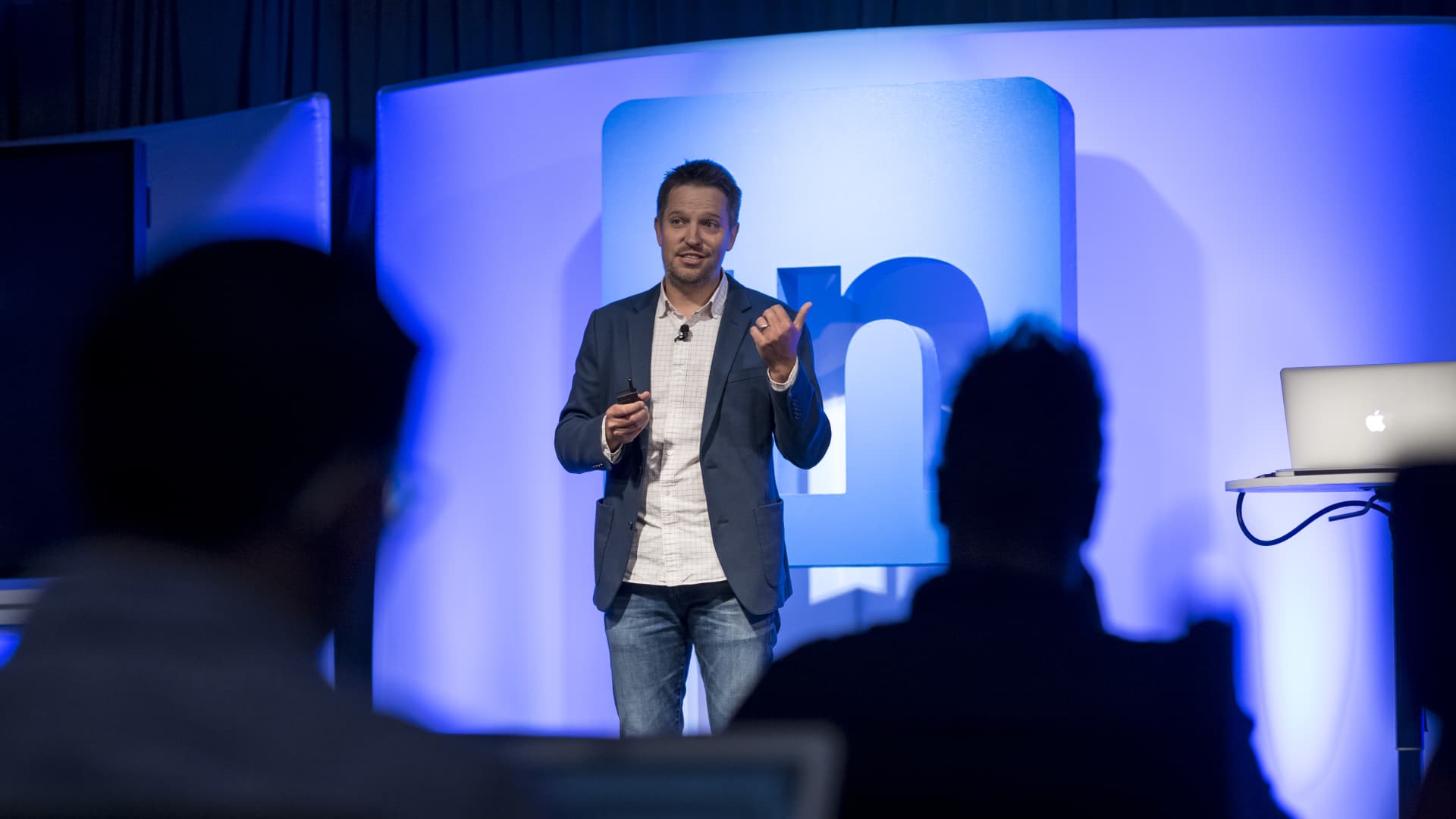Ryan Roslansky, CEO of Microsoft’s LinkedIn subsidiary, speaks at a LinkedIn event in San Francisco on Sept. 22, 2016.
David Paul Morris | Bloomberg | Getty Images
Influencer marketing has become big business on TikTok and Instagram, where popular creators can make good money by helping brands promote their stuff. Now, LinkedIn wants in the game.
As of last week, LinkedIn is letting advertisers pay to amplify posts from users, including those with sizable followings. Its product, called Thought Leader ads, launched in a limited capacity last year.
The Microsoft-owned business is looking for a jolt, as LinkedIn’s revenue growth has been stuck in single digits since 2022. The company is turning to its membership, which topped 1 billion in November, to help fuel expansion.
Influencer marketing to date has largely been a phenomenon of consumer apps, where shticks and gimmicks can turn internet-savvy creators into celebrities with millions of followers. Almost two-thirds of U.S. social media marketing dollars this year will flow to Instagram parent Meta and TikTok’s Chinese owner ByteDance, with Instagram and TikTok picking up a combined 2 percentage points of additional share by 2026, according to estimates from eMarketer.
LinkedIn, which was launched a year before Facebook, will grab just 4% of the market, equal to $4.5 billion in marketing revenue, eMarketer says, and its share will remain flat over the next two years.
“It takes a long time for ads and ad formats to really take root,” said Max Willens, a senior analyst at eMarketer, referring to LinkedIn’s latest endeavor.
LinkedIn introduced Thought Leader ads last year but with limited use. Brands could only amplify posts from their own employees. Mastercard, for example, promoted posts written by some of its leaders in Singapore, with one receiving over 500 notifications on the first day. LinkedIn has used Thought Leaders ads itself for some posts from operating chief Dan Shapero, but not yet for CEO Ryan Roslansky.
By opening up Thought Leader ads, LinkedIn is letting anyone boost a post as long as the author grants permission. Social media marketer Brendan Gahan is so bullish on the format that he’s focusing much of his efforts on helping companies use Thought Leader ads.
“In an era where brand safety is a big issue, LinkedIn has a leg up, particularly in contrast to Twitter,” said Gahan, who started an agency last year called Creator Authority, referring to the social media platform now known as X.

X lost some leaders working on brand safety last year, just as the Elon Musk-owned platform was seeing a surge in hate speech on the app.
LinkedIn has long been an effective site for advertisers because members list their employment details, making it easy for brands to target ads to relevant audiences. Advertising skews toward business-focused products like software and computer infrastructure, though automakers, universities and banks also use the network to reach potential customers.
“If you’re looking to sell a high-end B2B product, and you know the buying group is a CFO and someone in finance and like someone in HR, we can literally put ads in front of those specific people on LinkedIn, because the first-party data is so strong,” Roslansky said at a conference in late 2022.
Thought Leader ads came about after employees saw marketing clients promoting screenshots of other users’ content. Since turning on the offering last fall, the ads have yielded higher engagement than regular ads that run with images, said Abhishek Shrivastava, a LinkedIn vice president of product management.
“Humanizing your brand is critical for B2B and has been underused in that space,” said Shrivastava, adding that clients are very excited about it.
It might not be cheap. Racking up a thousand ad impressions generally costs more on LinkedIn than on Instagram or TikTok, partly because the company charges more for advertisers to reach its more affluent user base. Shrivastava said that rather than comparing the costs to other sites, brands will look at the sales and business leads they get from running ads.
For months, project management software startup ClickUp has been paying to promote LinkedIn posts from its own executives. Chris Cunningham, head of social marketing at the company, said traditional ads on LinkedIn can sometimes be repetitive and generic, and he’s eager to see how promoted posts will perform when influencers get involved.
On other social networks, ClickUp has found more success promoting posts from creators than with standard ads, Cunningham said. Plus, he said, “it’s super easy.”
Betsy Hindman, a marketer in Tennessee who helps companies make the most of their LinkedIn presence, said a brand ambassador with an audience can have a bigger impact than a typical ad.
“It’s part of a full end-to-end strategy that includes warming people up along the way with whatever type of content they respond to,” she said.
Building up a roster of creators will likely take time. Some influencers are represented by agencies, and LinkedIn’s Campaign Manager advertising system doesn’t have an automatic process for connecting media buyers with agencies.
“That’s a direction we are exploring,” Shrivastava said.
More data will soon be available to advertisers. Starting in a few weeks, LinkedIn members will be able to look up any company’s collection of ads and see its Thought Leader ads, a spokesperson said. That could help advertisers see what works best.
One potential boon for LinkedIn rests with the fate of TikTok. The app faces a possible ban in the U.S. after the House of Representatives passed legislation last month that would force ByteDance to sell it within six months. Momentum has since slowed, though Senate Minority Leader Mitch McConnell, R-Ky., urged lawmakers to take action on the matter earlier this week.
Willens from eMarketer said agencies are keeping an eye on the issue, but said “nobody feels there’s an imminent threat.”


